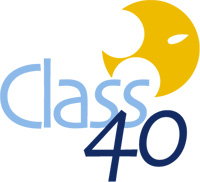
Can you tell us how you began your sailing adventure ?
I discovered sailing late in life, at the age of 18, during a training course on a houseboat on the Île d'Arz, with the Glénans association. I was immediately hooked, and a year later passed my first level of federal sailing monitorat. I then went on to complete my management training, while at the same time trying to get my A-levels !
It was at this time that I discovered the world of regattas, particularly through the Trophée des Lycées. In my final year, I set up a team with my high school in Boulogne-Billancourt... even though it's a long way from the sea! It was in this context that I met Franck Cammas during a Class 8 training course, an experience that awakened my taste for racing.
I then set up a Figaro 1 project to take part in the Solo Le Télégramme, a race for under-26s. This race enabled me to test myself against experienced and promising sailors like Armel Le Cléac'h and Nicolas Troussel. I realized then that I wasn't at their level, and that I'd better keep sailing as a passion.
So I went back to a more traditional life ashore, sailing Open 5.70s from time to time. When my first son was born 16 years ago, I sold my boat and put sailing on hold.
But a little over two years ago, while sailing the Ultim Actual, my passion caught up with me. While chatting on the water with Maxime Sorel, who was sailing with us, I mentioned the idea of racing the Figaro again. He said to me: “You're silly, there's the Class40, it's the ideal support for your project!”
And so I embarked on this adventure, with a project focused on helping wounded servicemen and women rebuild their lives through ocean racing. And that's how, in my humble way, I got back into the world of sailing.
How do you manage to strike the right balance between your role as skipper, project manager and company director ?
I don't know if I can really find a balance! Because of my arm problems, I'm only the third skipper on the Team, with François Verdier and Pierre-Laurent Garnero being the two main performers.
Wearing many hats can be complex, but I think all skippers face the same challenges. There are often common fundamentals between project management, business creation and sailing. I simply try to apply the same methods as in business to structure my approach.
My goal is to line up our Phénix at the start of the TRANSAT CAFÉ L'OR Le Havre Normandie, while continuing the adventure with the injured.
What motivated you to join the Class40 board ?
Joining the Council was an obvious choice for me.
I can't stand back when I'm passionate about something. So it was natural for me to offer my help in areas where I can bring real value.
Besides, when it comes to performance, I'm much more at ease on land than in my weather choices at sea !
What projects or topics are you particularly interested in for the future of the class ?
I'd say balance and consistency. The challenge is to ensure that Class40 remains as dynamic 20 years from now, or even longer. It's about demonstrating that our Class40s have their rightful place in ocean racing, and even strengthening their role in the face of the challenges that lie ahead, particularly in terms of preserving our planet.
Another essential objective is to make this world more accessible to everyone.
What advice would you give to other amateurs to encourage them to join Class40 ?
Simply come as you are, with your passions and desires. That's the beauty of Class40: bringing together “pros”, “Semi-Pro” and “Amateurs”. Without judgment or prejudice.
If you had to sum up your vision of Class40 in one word or phrase, which would it be ?
Open-mindedness and passion for ocean racing through an accessible medium.
How do you see the Mediterranean program?
What's happening in the Mediterranean is great in so many ways. This magnificent sea offers an ideal playground for complex races, while opening up to other countries.
It's also a great place for the pointus boats to make their mark, and sometimes surprise the scows. I hope that the fleet will continue to grow and attract more Italian sailors.
The first edition of the Med Max, conceived and organized by Kito de Pavant, proved that this was possible, and that the public was there to see it.